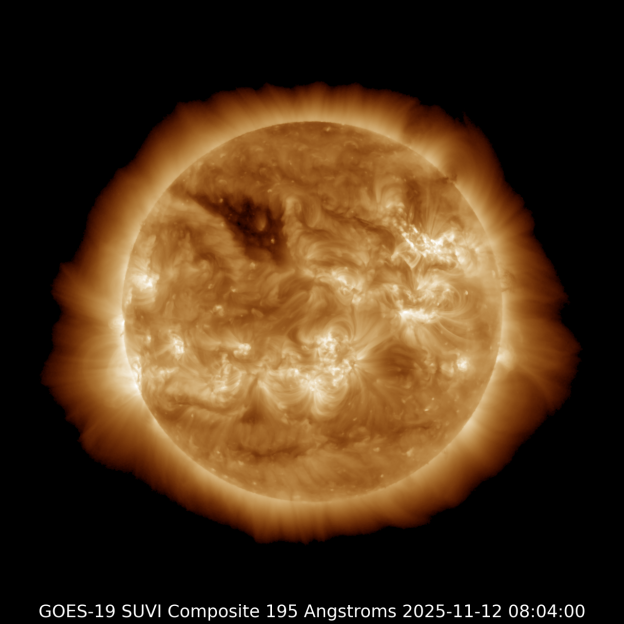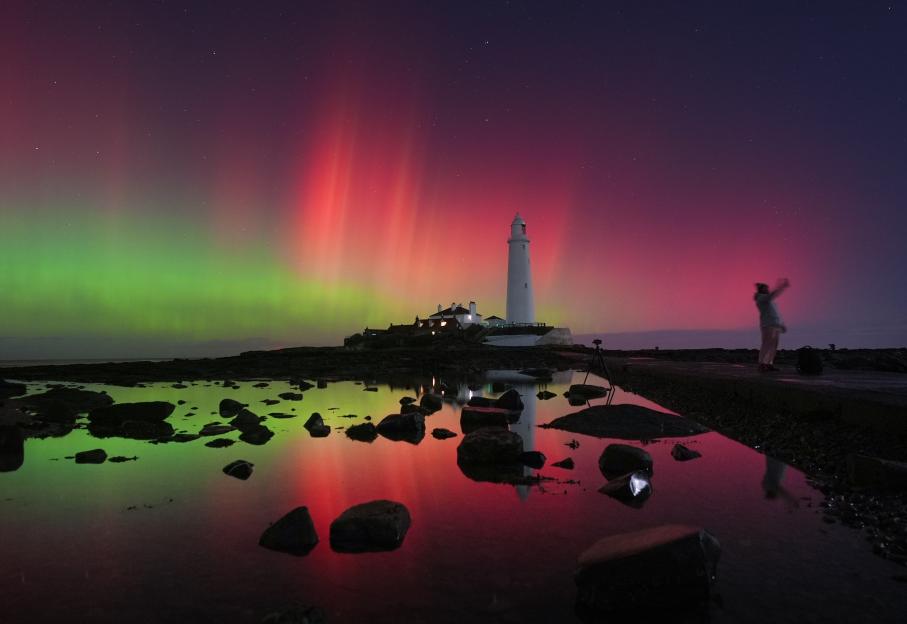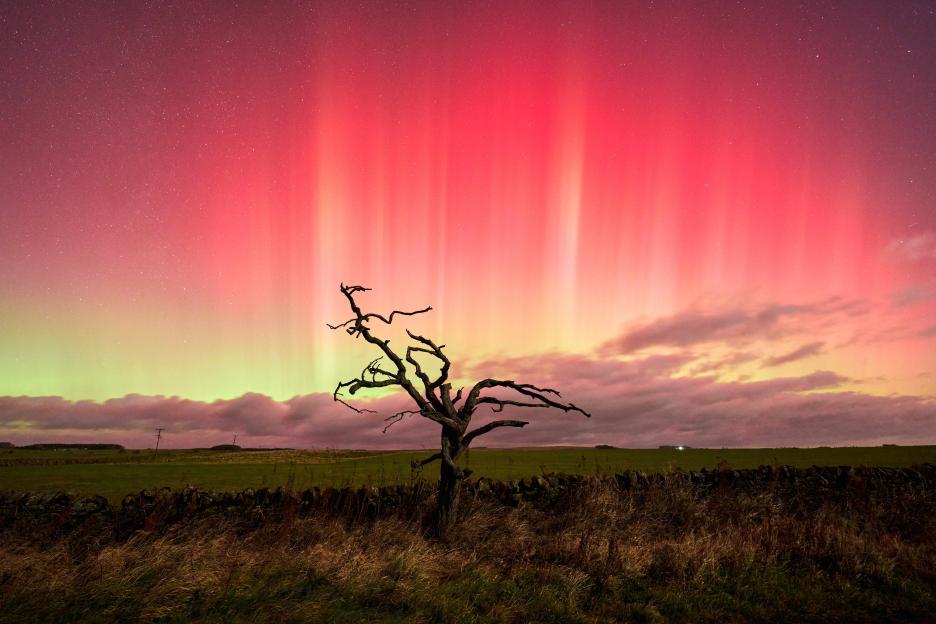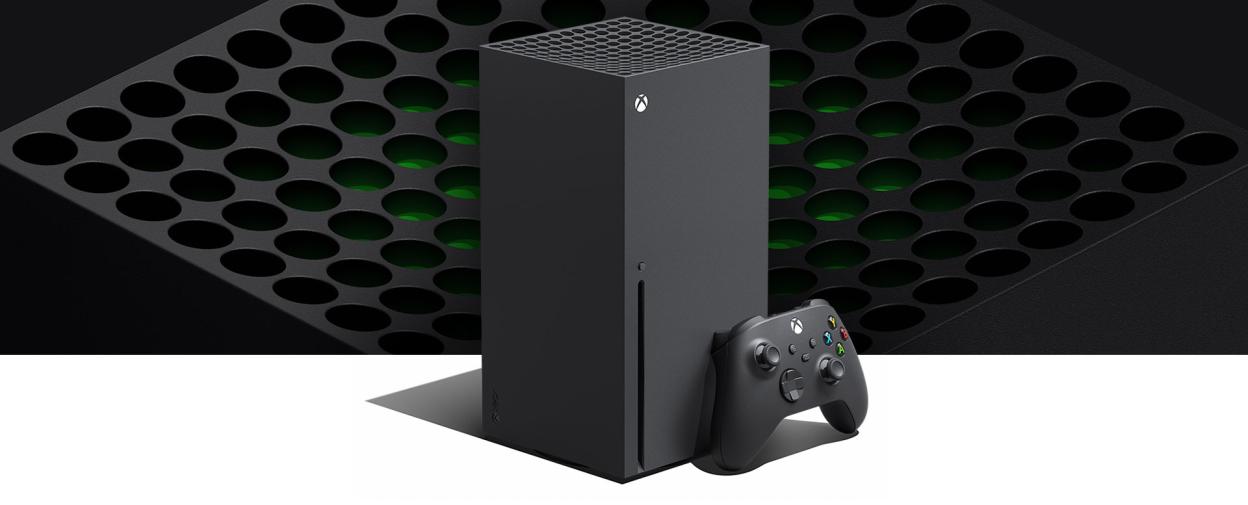WARNINGS have been issued as an ‘extreme’ solar storm hits Earth capable of power loss and radio blackouts.
A monster X5.1-class solar flare has already erupted from the sun yesterday, triggering radio blackouts across Europe and Africa.
 The sun is going through an active phase that triggers eruptions – and Northern LightsCredit: NOAA
The sun is going through an active phase that triggers eruptions – and Northern LightsCredit: NOAA
 Northern Lights were seen over Whitley Bay on the North East coast last nightCredit: PA
Northern Lights were seen over Whitley Bay on the North East coast last nightCredit: PA
 Those in Northumberland also got a good glimpseCredit: Shutterstock
Those in Northumberland also got a good glimpseCredit: Shutterstock
It also brought breathtaking with it.
Now three strong coronal mass ejections (CMEs) have been detected, triggering geomagnetic storms that also mess with Earth’s magnetic field.
CMEs are huge explosive bursts of solar plasma and magnetic field that shoot out of the sun.
Two of the three have already arrived and are eight times stronger than normal, according to the US National Oceanic and Atmospheric Administration (NOAA).
But a third big one is still moving through space and could strike anytime soon.
“Impact wise, if you use Precision GPS systems, there could be degradation on that if you need to be accurate in less than an inch, it could be off by much more than that as this type of activity continues,” warned Shawn Dahl, a space weather forecaster from NOAA.
“We’ve been communicating with space, launch officials because of a pending launch coming up.
“That may not happen because of this activity, but that will be for the decision makers to make.”
NOAA’s website warns radio blackouts are “expected” that could last from today until Friday.
The Met Office has classed the geomagnetic storm as an “extreme” G5, the highest possible level from midday until midnight.
Serious geomagnetic storms are capable of causing problems to the power grid.
“Localised voltage control and protective system problems may occur leading to potential for localised loss of power,” the Met Office’s space weather guidance reads.
“Transformers may experience damage.”
However, there is one positive side effect from it all, in the form of the Northern Lights – aka aurora borealis.
Brits were dazzled with a rare display last night – and there’s a chance those situated further south could see them tonight too depending on weather conditions.
“Visible aurora expected across parts of northern UK and similar geomagnetic latitudes, with a chance of sightings further south across England and Wales, though cloud cover is expected to inhibit ideal viewing conditions for many parts,” the Met Office’s website states.
WHAT ARE SOLAR FLARES?
According to Nasa, a solar flare is an "intense burst of radiation coming from the release of magnetic energy associated with sunspots".
They are our solar system’s largest explosive events.
While they can cause radio blackouts, they also bring Aurora Borealis, or the Northern Lights, to Earth.
Aurora is the dance between solar particles and the Earth’s magnetic field that makes the upper atmosphere glow.
Solar flares are ranked in classes, with X-class being the most powerful, followed by class M, C and the weakest, B.
For each group, a number from one to 10 – or beyond for an X-class flare – is assigned to to each flare based on its strength.







